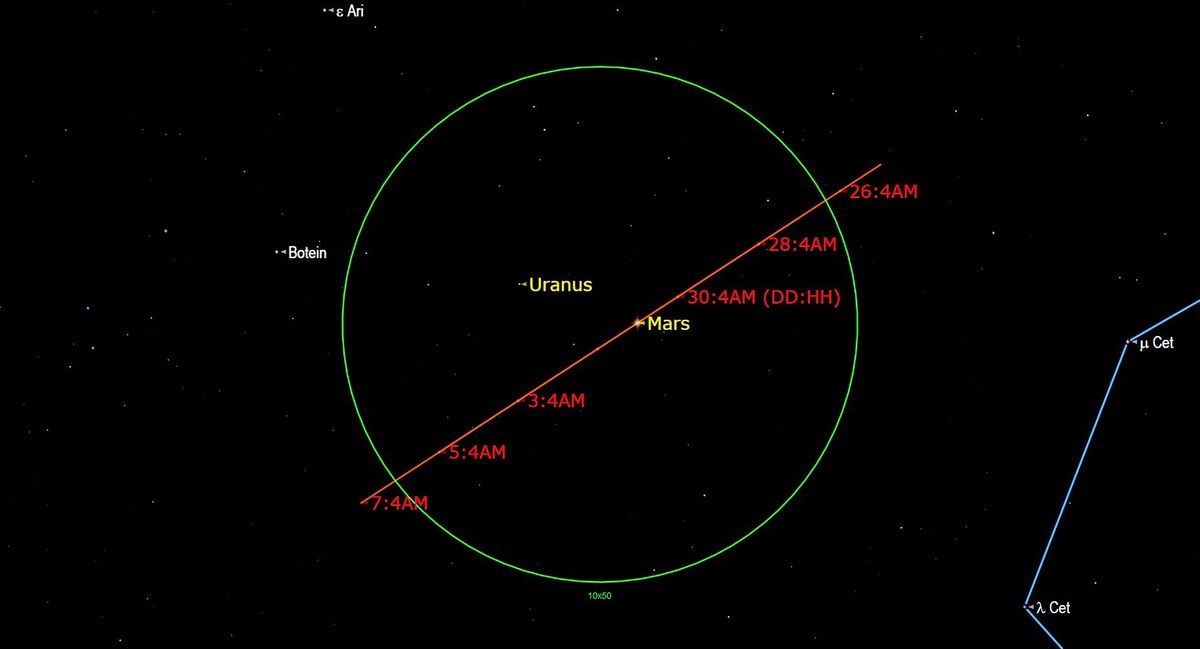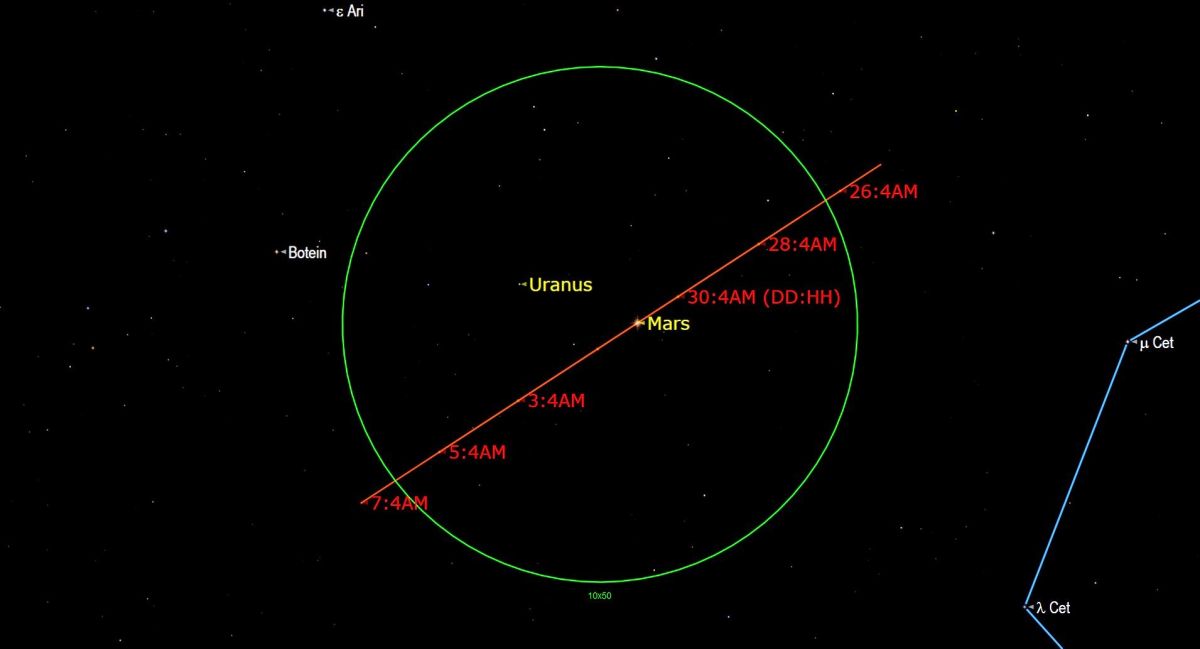
Turn your attention to the southeastern sky during the early hours on Sunday (July 31) to see Mars approach Uranus.
The duo will be close enough to share the same field of view as seen with binoculars or a low-magnification telescope, as illustrated by the green circle in the image above.
“Starting on Sunday, July 31, the eastward orbital motion of the bright red planet Mars (red path with labeled date:time) will carry it towards Uranus from the right (or celestial west),” wrote astronomer Chris Vaughan of Astrogeo.ca (opens in new tab), who prepares Space.com’s monthly Night Sky calendar in cooperation with Simulation Curriculum. “On Sunday, Uranus will be positioned a thumb’s width to the upper left of Mars,” Vaughan continued.
Related: Best stargazing tents: keep warm and dry when skywatching
During the following mornings, Mars will continue to travel past Uranus. The pair will appear at their closest on Aug. 2, when Uranus will sit just 1.5 degrees above Mars. (Your clenched fist held at arm’s length covers about 10 degrees of sky.)
According to Vaughan, the planetary “meet and greet” is best viewed between 3 and 4 a.m. local time, when the pair will sit almost halfway up the darkened sky.
The exact time of the event varies depending on your specific location, so you’ll want to check out a skywatching app like SkySafari or software like Starry Night to check for times. Our picks for the best stargazing apps may help you with your planning.
Uranus will appear as a blue-green dot, shining at magnitude 5.8, while the reddish dot of Mars will shine brighter at magnitude 0.2. (On the magnitude scale used by astronomers, lower numbers signify brighter objects. For comparison, at its brightest, the planet Venus shines with a magnitude of about -4.6.)
Uranus is often difficult to spot because it is a speck of light amidst a background of stars with similar brightness. But as distinctive Mars approaches the small blue-green dot, it should be easier to pick out from the celestial crowd. The skies will also be particularly dark as the thin waxing crescent moon will be below the horizon by the time the duo rises in the sky.
If you’re looking for a telescope or binoculars to observe Mars approach Uranus, our guides for the best binoculars deals and the best telescope deals now can help. Our best cameras for astrophotography and best lenses for astrophotography can also help you prepare to capture the next skywatching sight on your own.
Follow us on Twitter @Spacedotcom (opens in new tab) or on Facebook (opens in new tab).



